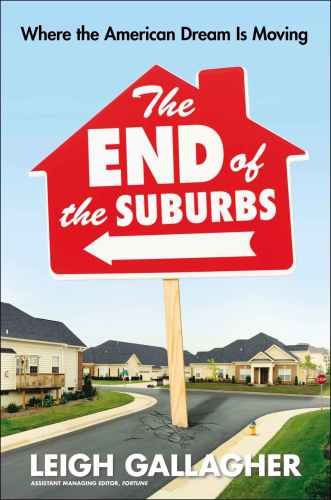
The End of the Suburbs
Where the American Dream is Moving
کتاب های مرتبط
- اطلاعات
- نقد و بررسی
- دیدگاه کاربران
نقد و بررسی

May 27, 2013
The suburbs are in many ways a uniquely American phenomenon—no other nation has them in such abundance. But their future is in doubt. Gallagher, assistant managing editor at Fortune, marshals ample evidence that the suburbs are in decline, as the financial crisis, long-term demographic trends, and increased environmental awareness conspire to drive Americans away from residential subdivisions. “Simply speaking, more and more Americans don’t want to live there anymore,” she writes. Through conversations with home builders, designers, and consumers, and a review of relevant data concerning suburban real estate, Gallagher heralds a future of “smaller-scale” communities and urban spaces characterized by walk-ability, socioeconomic diversity, and mixed-use development. The promise of more human-centered design will appeal to many readers. Gallagher’s ideal community seems to be a combination of Brooklyn’s Park Slope and Media, Penn., her own childhood suburb. Many of Gallagher’s ideas are more concerned with rejecting past excesses than with offering truly new perspectives. The same statistics and experts are quoted throughout this short tome, giving one the feeling of driving past a series of identical cul-de-sacs.

July 1, 2013
Fortune editor and public speaker Gallagher presents illuminating, persuasive data on the recent preference for vibrant city life over softer suburbia. An admitted West Village "city girl," the author reminisces about her "almost comically idyllic" childhood in suburban Media, Pa., and then smoothly examines how attitudes about the upholstered American dream of life in a bedroom community with "a house and a yard" have permanently shifted. She attributes this urban renaissance to several factors: lengthy, impractical commutes; environmental consciousness; an influx of poverty-stricken citizens into the suburbs forcing the wealthy to the city; changing familial demographics; and, most importantly, the economic crash that either plunged many mortgage-bound homeowners underwater or made them fear foreclosure. This point is highlighted best with Gallagher's story of her drive through a once-flourishing subdivision in Las Vegas, now riddled with foreclosed homes poorly camouflaged by desperate realtors. The author presents suburbia from a historical perspective that's entertaining and educative and juxtaposes the old with the new using unfiltered opinions from builders, homeowners, "sprawl refugees" who fight for suburban redevelopment, and developers pushing rural, mixed-use "city replicas." Though she focuses on a marked downturn in suburban affinity, Gallagher's reportage is evenhanded and comprehensively researched. In fairness, she notes that there are a large number of suburbs attempting their own reinvention in an effort to adapt to the changing climate of smaller communities and the myriad challenges they face. Good or bad, "a new kind of Great Migration is taking place," though the author admits it's still too early to elaborate further on any concrete solutions for those still harboring that pastoral American dream. A somewhat melancholic reality report made pleasant and palatable by the author's congenial delivery and promising vision.
COPYRIGHT(2013) Kirkus Reviews, ALL RIGHTS RESERVED.

July 1, 2013
While the baby boomers helped fortify the notion of the suburban single-family house as the American dream, the millennials are headed in another direction, according to Fortune writer Gallagher. The recession, rising fuel prices, and demographic shifts that mean smaller families and fewer and later marriages are contributing to a decline in the appeal of the suburbs. Gallagher talked to homebuilders, developers, planners, transportation engineers, architects, psychologists, and home buyers and sellers in cities and suburbs to offer a fascinating portrait of housing and lifestyle trends. She examines how the American dream came to be tied to the suburbs even as they are lambasted in popular culture and by social scientists and, lately, planners and engineers. New Urbanists argue that the suburb is an unsustainable model because the low-density population doesn't generate enough tax base to support it, unless it sprawls. Gallagher points to research and analysis showing rising populations in urban areas and suburbs who adapt the ideals of green living and walkable communities. Fascinating reading on changing trends in how and where we live.(Reprinted with permission of Booklist, copyright 2013, American Library Association.)

























دیدگاه کاربران